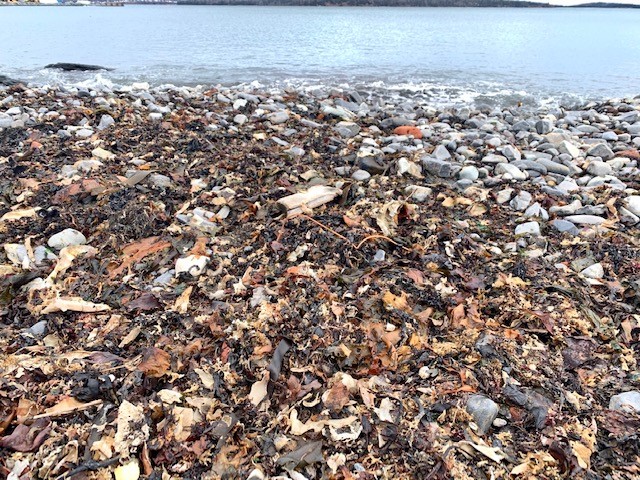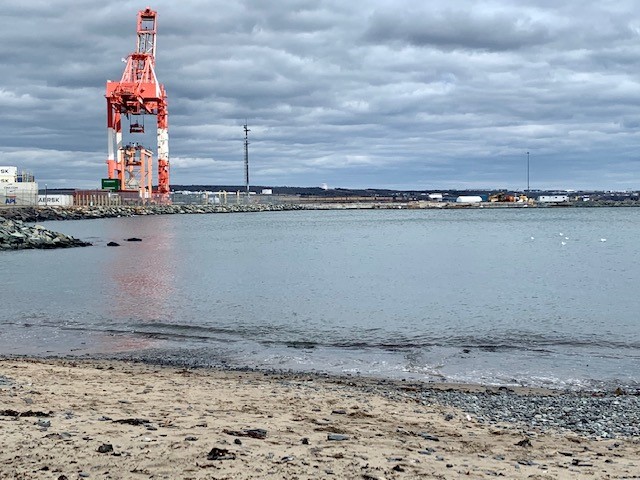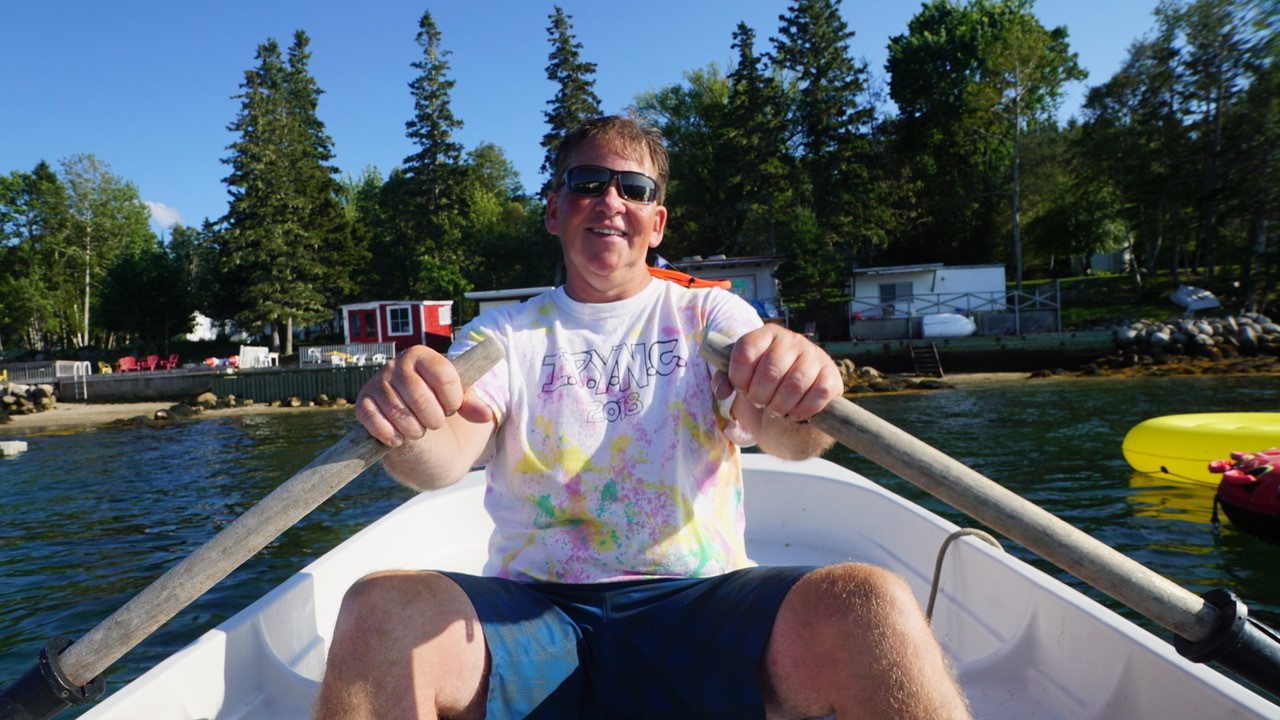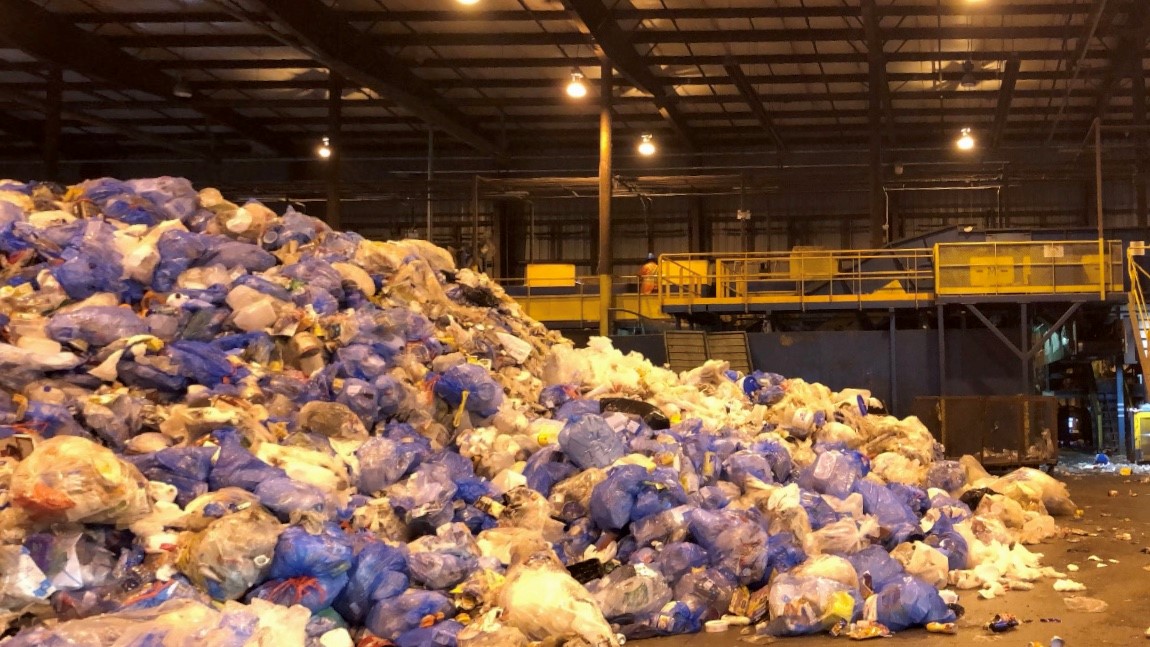The big fight against microplastics

caption
Seaweed and other garbage washing up on the shore of Black Rock Beach in Halifax.Oceans are choking on billions of pieces of plastic garbage. Meet some of the people working to clean it up
A pair of seagulls wheel overhead, nonchalant until they glimpse food. Spotting a dead fish, the gulls skitter onto the shore. By eating the fish they also eat tiny pieces of microplastics. Billions of bits of plastic are in the world’s oceans.
Many, ultimately, will be eaten by us.
“In a recent study it was realized that humans eat about a credit card worth of plastics every year,” says Alexa Goodman, a marine project coordinator at Coastal Action, a non-profit organization based in Lunenburg, Nova Scotia. She is the lead author of an extensive research paper done on marine debris in Eastern Canada. It estimates that more than 1.8 billion pieces of garbage are strewn across the bottom of the Bay of Fundy, 51% of it plastic (28% of it is fishing gear).
According to a 2017 U.N report, if plastic use continues at the current rate, by 2050 there will be more plastic in the ocean than fish. Big pieces of plastic can break into small pieces called microplastics, which severely impact marine life. Microplastics are “everywhere,” Goodman said, including “in our table salts, water and beer.”

caption
Black Rock Beach at Point Pleasant Park in Halifax.Imagine: Your stomach feels full of something heavy that makes it harder for you to breathe, and you spend the last of your breath looking for a safe place where you hope to find enough air to survive. That’s close to how fish and tortoises feel when plastic fragments are trapped inside their bodies.
Microplastics contaminate the entire ocean food chain, from small fish to whales. “They are so small and degraded, it’s almost near to impossible to tell what their original source might have been,” said Simon Ryder-Burbidge, a marine officer at the Ecology Action Centre. These fragments can take hundreds of years to decompose in soil or landfills, and even longer in the ocean. In addition microbeads, a type of microplastic added to health and beauty products, can easily pass through water filtration systems and end up in the sea.
Protect and enhance
On the rocky shore of St. Margarets Bay, Nova Scotia, Scott Pelton puts on his diving gear at the edge of the harbour. Pelton, 55, worked at the Nova Scotia Museum of Natural History before taking up a career as a teacher. He has spent almost his entire life living near the ocean. When he first started diving 30 years ago the ocean was blue like the sky. Now, the same ocean has small bits of plastic and broken fishing gear.
During the summers Pelton runs a camp for high school kids at his “Boathouse Institute of Oceanography.” He teaches them how to protect and enhance the ecological balance and ocean water quality. Guest speakers talk to the kids about plastics and microplastics in the ocean. “I turned my boathouse into a classroom of sorts,” said Pelton.

caption
The founder of the Boa house Institute of Oceanography, Scott Pelton.In Nova Scotia the ocean water has nearly three times more microplastics than freshwater bodies such as lakes and rivers. Cathy McCarthy, president of the Friends of McNabs Island Society, a non-profit organization based in Halifax, said volunteers every June pick up 500 bags worth of garbage.
Research by Rebecca Teddiman, an environmental engineering student at Nova Scotia Community College, found that McNabs has approximately 49 pieces of microplastics per square metre, whereas Lake Banook, one of the Dartmouth lakes, has 35 pieces.
According to Teddiman the main challenge is to figure out what their original source might have been. “Even our clothing has plastics in it, and you create microfibres from laundering your clothes,” she said. Teddiman urges people to carefully examine what they buy so everyone can work toward reducing their carbon footprint.
Microplastics often flow into larger ocean currents. The Great Pacific Garbage Patch is a collection of marine debris in the North Pacific. A National Geographic study showed that the patch contains a staggering number of pieces of plastic, 1.1 to 3.6 trillion. That’s at least 200 pieces of plastic for every person on the planet. It’s twice the size of Texas, and three times the size of France.
Changsheng Chen, a professor in the School for Marine Science and Technology of the University of Massachusetts at UMass Dartmouth, said tidal currents flow back and forth from the Gulf of Maine to southwest Nova Scotia, bringing all types of garbage, including plastics.
But not even oceanographers can tell us exactly how much floating scruff is out there because research is simply too expensive and the ocean too varied. Goodman at Coastal Action says, “In the next five years we are going to see more research coming out on the source and impact of marine plastics.”

caption
A recycling plant in Halifax, near the Otter Lake landfill.Problems and solutions
The water is almost still, with small waves occasionally hitting the beach with little force. Pelton reaches down to pick a pebble up, running his thumb over its smooth surface. He swings his arm back and flicks his wrist, watching the pebble skip across the surface of St. Margarets Bay. “We have such a diversity of life that comes here,” said Pelton. “It’s like unwrapping a present because you’re not sure what you’re going to see.”
Having lived near the shore for many years Pelton has seen all the magic that the ocean has to offer. But he is worried about things none of us can see – chemicals that might pass into the flesh of fish and humans. “I see what’s missing from the ocean compared to what it was when I was a kid, and that makes me worry about what the situation is going to be like in the next 20 years.”

caption
Saint Margarets Bay on the South Shore of Nova Scotia.A 2019 study by Kieran D. Cox and other professors at the University of Victoria in B.C., published in the journal Environmental Science and Technology, estimated that the average American is consuming somewhere between 39,000-52,000 microplastic particles a year. It also estimated that every year at least a million sea birds and 100,000 marine mammals die by entangling themselves in or ingesting debris. “Their stomachs often feel full of plastics, and not because they didn’t get enough food,” said Ryder-Burbidge of the Ecology Action Centre.
Plastics have transformed our lives as few other inventions have, and mostly for the better. They have eased travel into space and revolutionized medicine. In the form of clingy, light-as-air wraps, they extend the life of fresh food. In airbags, incubators and helmets, plastics save lives daily.
A world of possibilities opened up. Almost anything could be made of plastic, and so it was, because plastic was cheap. We began creating things that we had no intention of keeping. Most plastic is used as packaging that’s discarded within minutes after purchase. In 2017 the Coca-Cola Company, perhaps the world’s largest producer of plastic bottles, acknowledged for the first time just how many it makes: 128 billion a year.
The good news is that Canada is one country with a plan. In Sept. 2018, Canada with its G7 partners recognized the need for urgent action to address issues related to plastic pollution and its impacts on communities and the entire ecosystem. The country pledged $1.5 billion as part of the national Oceans Protection Plan. “We are responsible for contributing to the problem, but also to solving it,” said Goodman at Coastal Action.
The most heartening things about the plastic waste problem is the recent explosion of attention to it, and the scattered but serious efforts to address it. Bans on plastic microbeads in cosmetics took effect in 2018 in the U.S., Canada, the U.K., and four other countries. The industry is phasing them out. Multinationals including PepsiCo, Amcor and Unilever have pledged to have 100 percent reusable, recyclable, or compostable packaging by 2025. And Johnson & Johnson is switching from plastic-back to paper stems on its cotton swabs.
The problem of ocean plastic is not as complicated as climate change. To do something about plastic, we don’t have to remake our entire energy system.
Still, everyone from government officials to business executives to scientists to students, can make a difference. We can choose not to use nonessential plastics, and to eat seafood only from sustainable, legally caught stocks. We can get serious about reducing our carbon footprints, so that we are on the right side of global efforts toward a carbon-neutral world by 2050.
Sir David Attenborough said it best: “The plastics crisis is entirely within humans’ power to solve, but it’s going to work only if we do it together.”
About the author
Sarah Khan
I am from India studying journalism at the University of Kings College. I love going on hikes and cooking!

S
Scott Pelton